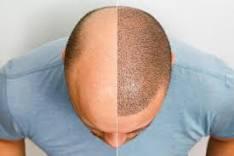
Introduction
Hair loss can have a significant impact on one's self-esteem and confidence. A https://www.royalclinicsaudia.com/en-sa/hair-transplant/ offers a chance to regain a natural-looking hairline and a boost in self-assurance. This guide aims to provide you with insights into the world of hair transplants, detailing the procedure's steps, benefits, risks, and everything in between.
Understanding Hair Loss
Before delving into the procedure, it's crucial to understand the factors leading to hair loss. Genetics, hormonal changes, and lifestyle factors contribute to hair thinning and baldness. Hair transplants are a viable solution for individuals with hereditary hair loss, known as androgenetic alopecia.
Types of Hair Transplants
There are two primary methods of hair transplantation: Follicular Unit Transplantation (FUT) and Follicular Unit Extraction (FUE). FUT involves removing a strip of scalp from the donor area, while FUE involves extracting individual hair follicles. FUE is preferred for its minimally invasive nature and natural results.
Preparation for the Procedure
Leading up to the transplant, it's essential to follow pre-operative instructions provided by the clinic. These instructions may include avoiding blood-thinning medications and alcohol consumption. Additionally, having realistic expectations about the results is crucial for a successful procedure.
Consultation with a Specialist
During the initial consultation, a hair transplant specialist will assess your scalp's condition, discuss your goals, and recommend the most suitable approach. This is the time to ask questions and clarify any doubts you may have.
The Hair Transplant Procedure
1. Anesthesia
The procedure begins with administering local anesthesia to ensure your comfort during the process.
2. Donor Hair Extraction
For FUT, a strip of scalp is removed from the donor area, typically the back of the head. In FUE, individual hair follicles are extracted directly from the scalp.
3. Graft Preparation
The harvested hair follicles are carefully dissected and prepared for transplantation.
4. Recipient Site Creation
Tiny incisions are made in the recipient area, where the follicles will be transplanted.
5. Graft Placement
The prepared follicles are meticulously placed into the recipient incisions, following a natural hair pattern.
Recovery and Post-Procedure Care
After the procedure, you'll receive instructions on how to care for your newly transplanted hair. This may include gentle hair washing, avoiding direct sunlight, and refraining from strenuous activities.
Expected Results
Over the following weeks, the transplanted hair will shed, making way for new growth. Visible results typically appear within a few months, with full results becoming apparent after a year.
Risks and Considerations
While hair transplants are generally safe, it's essential to be aware of potential risks, including infection, scarring, and unnatural-looking results. Choosing a reputable clinic with experienced surgeons minimizes these risks.
Cost of Hair Transplant
The cost of a hair transplant varies based on factors like the clinic's location, surgeon's expertise, and the extent of the procedure. However, considering the long-term benefits, many individuals find it to be a worthwhile investment.
Alternatives to Hair Transplant
For those who prefer non-surgical options, alternatives like topical treatments, medications, and hairpieces are available. However, these may offer temporary or limited results compared to a hair transplant.
Choosing the Right Clinic
Selecting a reputable and experienced clinic is paramount to a successful hair transplant. Research clinics, read reviews, and schedule consultations to find a clinic that aligns with your goals.
Frequently Asked Questions
Q1: Is a hair transplant painful?
The procedure is performed under local anesthesia, ensuring minimal pain. Some discomfort may be experienced during the recovery phase.
Q2: Can women undergo hair transplants?
Yes, women can also benefit from hair transplants, especially in cases of pattern baldness.
Q3: Will the results look natural?
When performed by skilled surgeons, the results of a hair transplant appear incredibly natural.
Q4: Can I style transplanted hair?
Absolutely. Once the transplanted hair grows out, you can style, cut, and treat it just like your natural hair.
Q5: How long does recovery take?
Most patients can return to work within a week. Complete recovery and hair growth may take several months.
Conclusion
A hair transplant can be a life-changing solution for those struggling with hair loss. By understanding the procedure, its benefits, and potential outcomes, you're empowered to make an informed decision about your hair restoration journey. Take the first step towards a fuller head of hair and renewed confidence.

Comments
JosephCef
08 / 26 / 23
Permalink
qosnnelo
[url=http://promethazine.science/]buy phenergan 25mg[/url]
Zakstilt
08 / 26 / 23
Permalink
ijizldxy
[url=http://albendazole.science/]albendazole with no rx[/url]
Elwoodrok
08 / 26 / 23
Permalink
kmlknhjh
[url=https://silagra.science/]silagra 100 mg tablet[/url]
DavisDrync
08 / 26 / 23
Permalink
kksuqhfu
[url=http://valtrexm.com/]valtrex otc[/url]
Suestilt
08 / 26 / 23
Permalink
sqxuakem
[url=https://dexamethasoner.online/]where to buy dexamethasone[/url]
Curtisvep
08 / 26 / 23
Permalink
jqgoemqr
[url=http://paxil.party/]paroxetine generic[/url]
Joestilt
08 / 26 / 23
Permalink
vytfezab
[url=http://happyfamilyrxstorecanada.online/]online shopping pharmacy india[/url]
ScottnoM
08 / 26 / 23
Permalink
Lateitendaden iqxsx
dark web sites tor markets
ScottnoM
08 / 26 / 23
Permalink
Lateitendaden yejlp
deep web links tor darknet
ErnestZed
08 / 26 / 23
Permalink
Lateitendaden sgzjx
dark web sites links deep web search